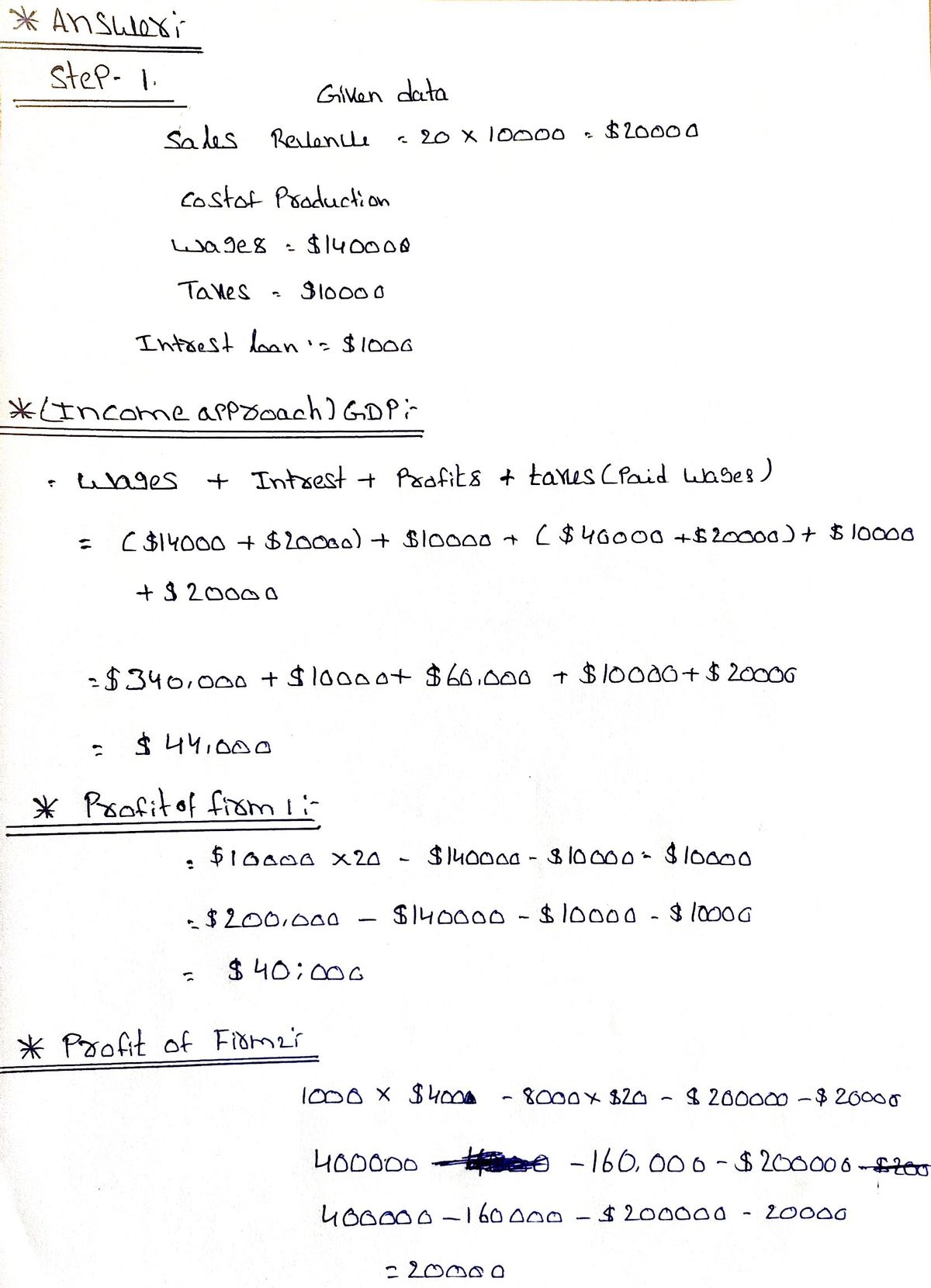ood X as an input into its manufacturing process. It buys 8000 units of good X 1000 units of good Y, which it sells for $400 per unit. It pays $200000 in wag es, with the rest as profits. =nt takes in taxes from only these two firms, and uses it to pay wages to provid. ervices, for instance national defense. te GDP using the three different methods. (Of course, you'll arrive at the same cate clearly what values you're using in each case to arrive at the final answer, know what is included in each method of calculating GDP.) coach: approach: ue-added) approach:
ood X as an input into its manufacturing process. It buys 8000 units of good X 1000 units of good Y, which it sells for $400 per unit. It pays $200000 in wag es, with the rest as profits. =nt takes in taxes from only these two firms, and uses it to pay wages to provid. ervices, for instance national defense. te GDP using the three different methods. (Of course, you'll arrive at the same cate clearly what values you're using in each case to arrive at the final answer, know what is included in each method of calculating GDP.) coach: approach: ue-added) approach:
Principles of Economics 2e
2nd Edition
ISBN:9781947172364
Author:Steven A. Greenlaw; David Shapiro
Publisher:Steven A. Greenlaw; David Shapiro
Chapter13: Positive Externalities And Public Goods
Section: Chapter Questions
Problem 9RQ: In what ways (it) company investments in research and development create positive externalities?
Related questions
Question

Transcribed Image Text:Question 1
Consider an economy with two firms and a government. Firm 1 produces 10000 units of good X, which
it sells for $20 per unit. It uses this revenue to pay $140000 in wages, $10000 in taxes, and $10000 in
interest on a loan, with the rest as profits. Firm 1 sells some of its output to consumers, and some to
Firm 2 as an intermediate good in their production process.
Firm 2 uses good X as an input into its manufacturing process. It buys 8000 units of good X and uses
them to create 1000 units of good Y, which it sells for $400 per unit. It pays $200000 in wages and
$20000 in taxes, with the rest as profits.
The government takes in taxes from only these two firms, and uses it to pay wages to provide
government services, for instance national defense.
Please calculate GDP using the three different methods. (Of course, you'll arrive at the same answer;
however, indicate clearly what values you're using in each case to arrive at the final answer, so as to
illustrate you know what is included in each method of calculating GDP.)
1)Income approach:
2)Expenditure approach:
3)Product (value-added) approach:
Expert Solution
Step 1
*Answer:

Trending now
This is a popular solution!
Step by step
Solved in 2 steps with 2 images

Knowledge Booster
Learn more about
Need a deep-dive on the concept behind this application? Look no further. Learn more about this topic, economics and related others by exploring similar questions and additional content below.Recommended textbooks for you

Principles of Economics 2e
Economics
ISBN:
9781947172364
Author:
Steven A. Greenlaw; David Shapiro
Publisher:
OpenStax

Principles of Economics 2e
Economics
ISBN:
9781947172364
Author:
Steven A. Greenlaw; David Shapiro
Publisher:
OpenStax